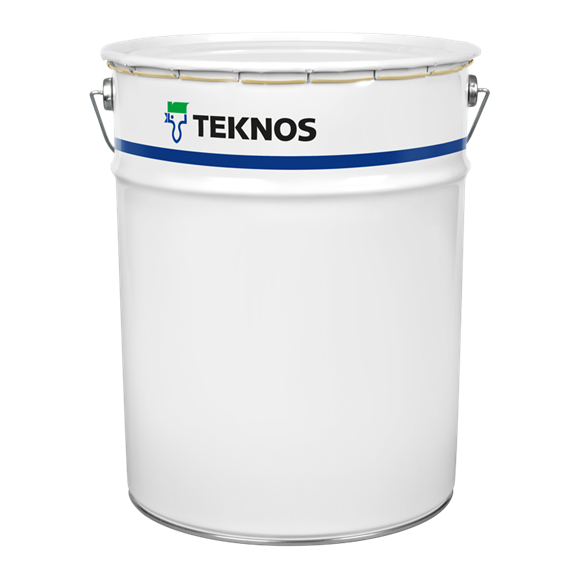TEKNOFLOOR 660F
Polyurethane coating

- 2-component
- Topcoat
TEKNOFLOOR 660F is a solvent-free, two-component polyurethane coating.
Used on industrial floors where elasticity and good resistance to mechanical abrasion is required. The coating has very good adhesion properties and elasticity, and therefore it is suitable also on e.g. asphalt surfaces. The coating withstands water, chemicals, oil, grease and petrol. It does not resist strong acids nor continuous attacks by organic acids or strong solvents. The abrasion resistance of the coating is very good. When good colour and gloss retention is required the coating can be overcoated with polyurethane top coats of the TEKNODUR 0100 series. The coating becomes level by itself on even surfaces. Properties of a 2 mm screed: - Tensile strain at break: 90% (ISO 527-2) - Tensile strength: 8.8 MPa (ISO 527-2) - Crack bridging ability: 1.7 mm (EN 1062-7, method A) - Compressive strain at 50% compression: 50 MPa (ISO 604)
Technical data sheet
Safety data sheet
Other product specific documents
Surface preparation
Application
Application conditions
Storage
| Solids | abt. 100 % by volume |
|---|---|
| Total mass of solids | abt. 1400 g/l |
| Volatile organic compound (VOC) | abt. 0 g/l |
| Pot life | 15 min (+23 °C) |
| Pot life, +23°C | 30 - 60 min (mixture poured out on the floor) 10 - 15 min (mixture kept in the vessel) |
| Mixing ratio | 4:1 by volume (comp. A : comp. B) |
| Hardener | Comp. B: TEKNOFLOOR HARDENER 660H |
| Gloss | Full gloss |
| Practical spreading rate | 0.5 - 2.0 m²/l depending on the film thickness. |
| Drying time – fit for light traffic | 16 h |
| Drying time – fully cured | 7 d |
| Thinner | Not to be diluted. |
| Clean up | TEKNOSOLV 9521. Wash the equipment immediately after use. |
| Colours | TM-114 NOTE! Sunlight will change the colour and glossiness of the coating in the course of time. |
| Safety markings | See safety data sheet. |
| Approvals & certificates | CE marking,M1 classification |